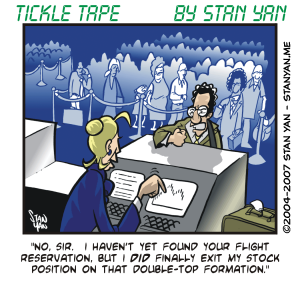One of the biggest mistakes amateur traders frequently make is letting their emotions influence their trading decisions. For example, the typical novice puts on a trade that is too large, and may not delineate or follow an adequately detailed trading plan. The consequence of this trading approach is that one is overly emotional. Decisions may be impulsive and based on fear, rather than on a cold, objective analysis of available information.
Emotions often bias the perception of market action and often lead to major trading mistakes. Although many traders intellectually know they must maintain objectivity, this can be hard to do in reality. Prices are in constant flux, and taking advantage of this volatility is the way traders make profits. The greatest profits are made when the masses react emotionally, such as when markets reverse, trends change and the about-face in supply and demand imbalance provides price momentum and velocity.
It’s understandable that as prices change rapidly, one’s emotions jump up and down. Most people find this rollercoaster ride uncomfortable. A more optimal emotional state is one where a trader is focused on the process of trading. One is calm, relaxed, and able to analyze the flow of incoming information with ease.
How can you maintain an optimal level of emotional experience? It takes practice and experience with the markets. But there are a few precautions you can take. First, try to limit your risk. Trade small positions if you have to. A useful adage to follow is, “Trade money you can afford to lose.” If you are taking risks with money you can’t afford to lose, you’ll naturally feel a sense of insecurity and urgency.
The best way to control this well-founded fear is to trade smaller positions. It’s also essential to use a protective stop. Although it takes some skill to place a stop in a way that you can account for volatility, a protective stop gives you an added level of security that is bound to help ease the fear and anxiety you experience as you monitor your trade.
Finally, always outline a very detailed trading plan. Don’t leave any element unspecified. Fear and anxiety are most elevated under conditions of uncertainty. When you leave an element of your trading plan unclear, you’ll not be sure of what to do under all possible conditions. By defining each element of a trading plan, in contrast, you’ll know exactly what you are trying to accomplish and you’ll know in your gut that you can tackle any event that should arise as you monitor your trade. So get off the rollercoaster.
Don’t let your emotions get the better of you. Take precautions to control risk and trade a detailed plan with specific entrance and exit strategies. You’ll achieve consistent profitability in the end.


